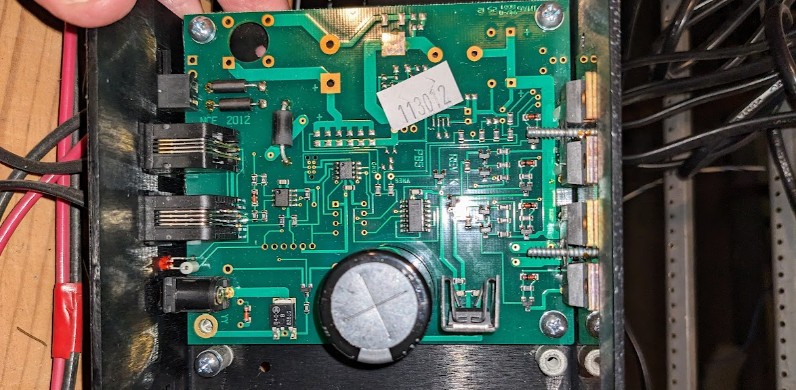The Randall Museum in San Francisco hosts a large HO-scale model model railroad. Created by the Golden Gate Model Railroad Club starting in 1961, the layout was donated to the Museum in 2015. Since then I have started automatizing trains running on the layout. I am also the model railroad maintainer. This blog describes various updates on the Randall project and I maintain a separate blog for all my electronics not directly related to Randall.
2024-02-19 - NCE Boosters Voltage Level
Category RandallWith Allen, we used the new “voltmeter car” to measure the DCC voltage on the track at different spots. As expected, the voltage varies by booster somewhat, and then I got an interesting surprise.
Booster 1 |
13.1 V |
P1 V1 (Valley1), P1 STKYD |
Booster 2 |
10.8 V |
P2 V2 (Valley2), P2 NAPA, P2 TOWN LODI, P2 FAIRFIELD |
Booster 3 |
12.5 V |
P3 MTN-1, P3 BRN RCH-2 |
Booster 4 |
12.6 V |
P4 MTN-2, P4 BRPORT, P4 SIA RND, P4 STK STN |
Booster 1 |
Booster 2 |
Booster 3 |
Booster 4 |
We tried placing the voltmeter car on a few different places on each power district. We also tried in every yard and the voltage was the same for their corresponding booster / power district. The conclusion is that the voltage seems uniform in any given district, it doesn’t seem to depend on distance, or whatever. Of course, some folks will understand we’ve measured this with no load, and it may be different with trains running. Although for the yard, it’s noteworthy they all contain idle engines thus technically these boosters have some load, even if minimal.
Now, let’s discuss our findings.
Booster 1 isn’t really a booster -- it’s the NCE Command Station itself.
Booster 2, 3, and 4 are all NCE PB5 boosters. Each has its own dedicated “brick” power supply.
And thus the obvious question: why is the voltage on PB5 Booster 2 so much lower than the other 2 PB5 boosters?
There is one interesting aspect here: all the boosters are NCE PB5. According to the NCE PB5 documentation, they should have an output of “13.8V or 12 V depending on the power supply”, and it is not adjustable -- their older ones used to have a little potentiometer inside, but not these ones. I opened one to check, it’s pretty lonely in there:
The NCE PB5 user manual (PDF) states voltage can be “changed using a switch on the power supply”. I don’t recall ours having any switch. I’ll have to look at it again -- this link from Tony’s Train clearly shows the power supply should have a switch on the side. It’s entirely possible that one power supply is set to the incorrect setting -- these are “brick” power supplies and in my experience, they tend to work perfectly or die altogether, they don’t just “lose” output voltage. I realize I can simply measure directly the output of the 3 booster power supplies (not connected to their boosters) to check they are all the same.
To be clear, this is unrelated to the potential power loss we were originally investigating since the low voltage booster is on Booster 2, whereas the power loss was observed by me on Stockton Yard (Booster 1), and the Mountain 1 (Booster 3) by Allen. Although for that latter, I think the culprit may still likely be the very poor design of the mountain with all the extra bus wires as explained here when too many engines are running on that particular power district. I’ll wire a more permanent voltmeter display next to the command station to investigate this hypothesis.




